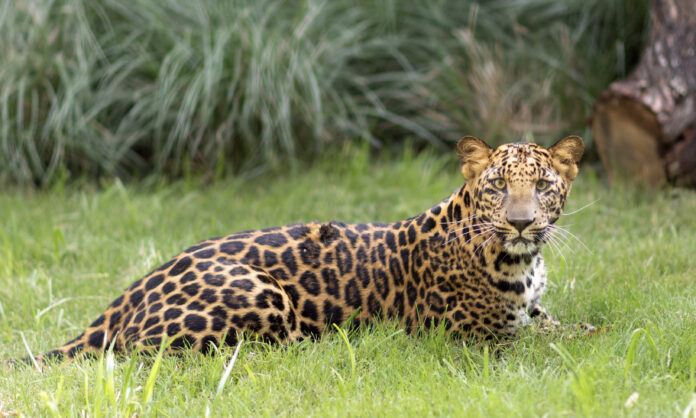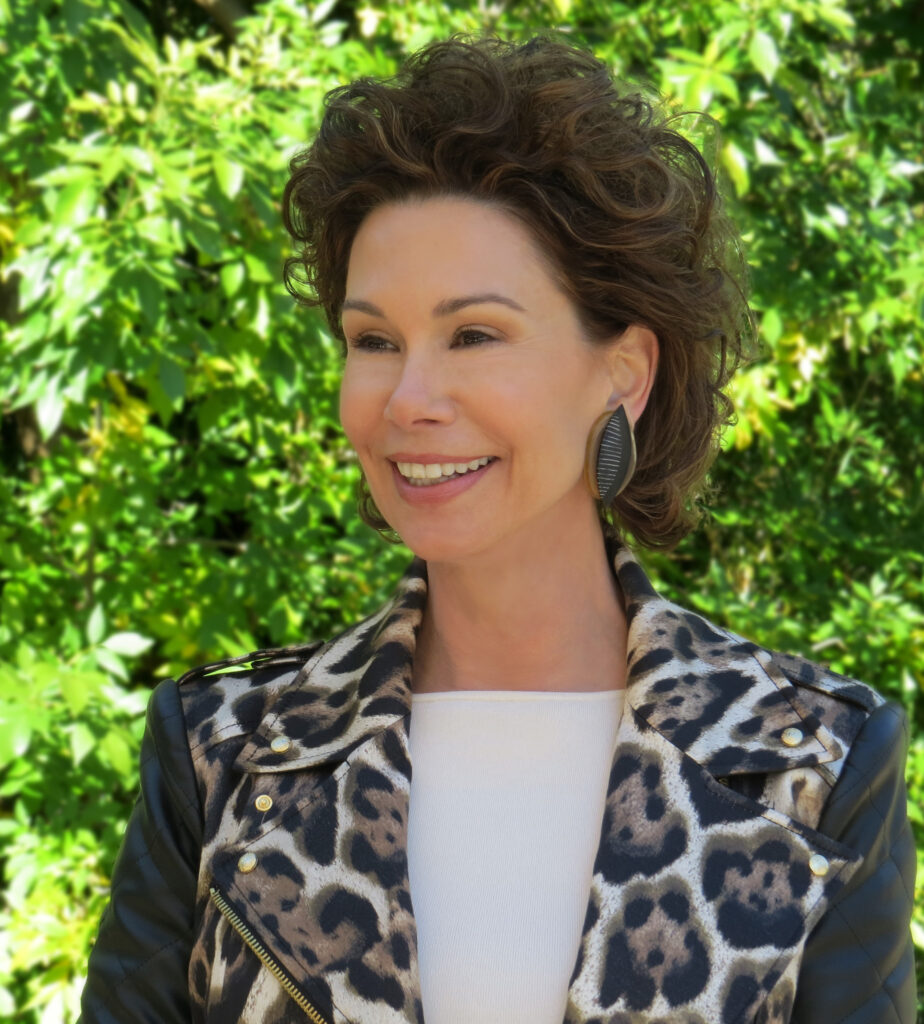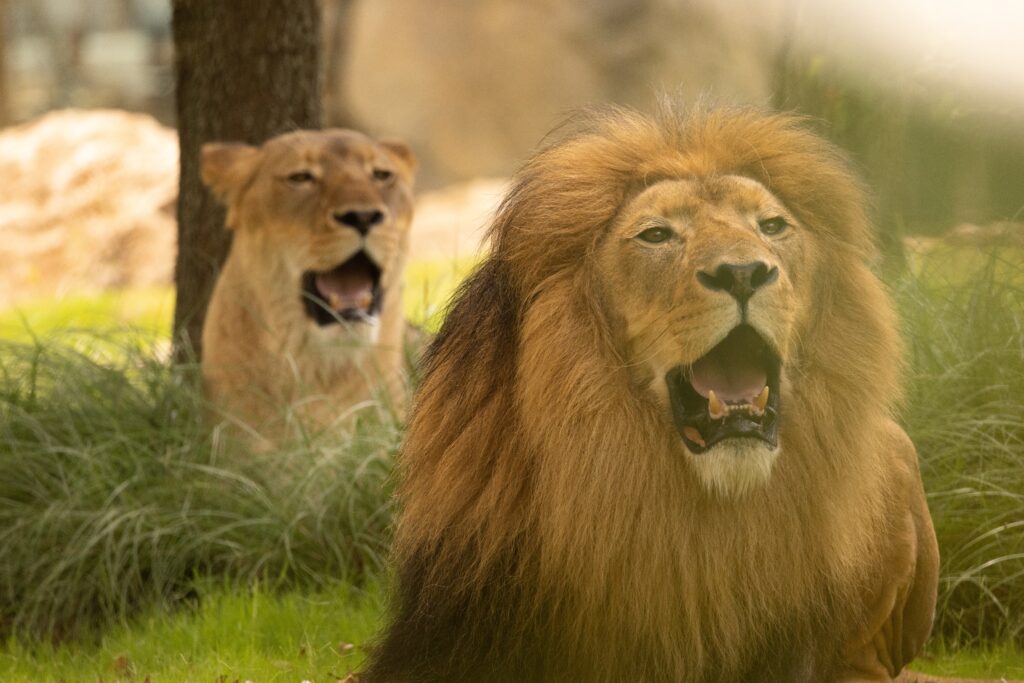Ramona Bass welcomed the newest member of her family Thursday when the Fort Worth Zoo unveiled its newest exhibit, “Predators of Asia & Africa.”
“My children call it (the zoo) the sibling. It’s like a fourth child,” said Bass, chair of the Fort Worth Zoological Association Board of Directors and the driving force behind the zoo’s growth and development since the mid-1980s.
It was Bass who spearheaded the 1991 public-private venture that started the once run down and ridiculed city-owned zoo on the path to what it is today: one of the most renowned zoos in the nation. Among its many accolades, it has been voted a top zoo in North America by USA Today and one of the world’s greatest by Bloomberg TV, as well as the Best Zoo in Texas by Yahoo Travel.
And now, thanks to a $130 million capital fundraising campaign led by Bass, Thursday’s opening of its newest animal habitat brings the zoo three-fourths of the way toward completion of a visionary project called “A Wilder Vision.”
The first phase, the African Savanna, opened in 2018, followed by Elephant Springs in 2021. The Predators of Asia & Africa habitat not only adds some new attractions but brings back popular carnivores – lions have been biding their time in Abilene – that have been missed by zoo visitors and officials alike while renovations were underway.
“We’re thrilled to have our lions back and they’re thrilled to be home,” Bass said.
“Ramona’s done it again – exclamation point!” said Arden Moore, president of the Fort Worth Zoological Association. “It’s one more fantastic milestone for the Zoo Association. It couldn’t have been done without great donors, great staff, along with our partnership with the city of Fort Worth.”
The city still owns the zoo but the 1991 partnership deal gave the Zoological Association management responsibility for what has since become one of Fort Worth’s most compelling drawing cards and one of its most significant sources of economic impact.
The Predators of Asia & Africa exhibit highlights some of the most dramatic and skilled hunters of the animal kingdom, and the habitat features a host of exciting new elements, including:
- Cascading waterfalls, lush grass, trees and rock structures form enriching, naturalistic spaces, often separating guests from the animals by only a pane of glass.
- Upon entering the zoo and standing on the main path, guests will be greeted by a pride of African lions in their beautiful and enhanced new home. Guests can also observe the pride from above at the top of the waterfall flowing through the entire predators complex.
- Guests will continue their journey into Asia to meet a species new to the zoo: the elusive clouded leopard.
- Following the winding, shaded walk, guests will discover the critically endangered Sumatran tiger and get up close and personal with the intriguing striped hyena.
- Upon crossing into Africa on the upper path, guests encounter the cheetah, the fastest land mammal on earth. These animals return to the zoo in an enriching and newly expanded habitat.
- Beyond the grotto is a pack of African painted dogs.
- Also, the zoo welcomes African leopards for the first time in its 114-year history. The exhibit includes a playful young sibling duo.
- In addition, multiple aviaries house several exotic bird species, including the red-crowned crane, Satyr tragopan, African pygmy falcon and more.
Complete with educational programming such as keeper chats, Predators of Asia & Africa will share critical messages of conservation and environmental stewardship. Times for the chats are posted at each part of the exhibit.
“Conservation, education, that’s what we’re all about,” Bass said.
“Ramona, you’ve done it again,” exclaimed Fort Worth Mayor Mattie Parker, calling the city-zoo collaboration “one of the most important public-private partnerships in Fort Worth history.”
“I spend a lot of time here,” Parker added with a chuckle, “I have a 12-year-old. We really do have the No. 1 zoo in the country. People come from all over.”
Fort Worth City Council member Elizabeth Beck read a proclamation declaring June 22 as Big Cats Day. She also noted that, having opened in 1909, the Fort Worth Zoo is the oldest continuous zoo in Texas.
Nearly a decade ago, the zoo began planning for A Wilder Vision, its master plan that guarantees for generations the survival of certain species that may in our lifetime become extinct in the wild.
“We can’t wait to reunite guests here at the zoo with these magnificent apex predators that are so crucial to ecosystems across the globe,” said Michael Fouraker, the zoo’s executive director.
Bass praised the zoo staff for “their love for the zoo, their enthusiasm.”
“I don’t think anyone has ever sweated as much in their lives as we have the last two weeks,” she added, reflecting on last-minute preparations for the debut of the predators habitat.
Bass also gave credit to then-Mayor Bob Bolen and Councilman Bert Williams, who helped steer approval of the zoo plan in 1991. It was the city’s first public-private partnership and would become a model for zoos and museums elsewhere.
“Bert was the driving force on the council. He and Bob Bolen were determined,” she said.
“People didn’t want it. Here comes this kid from San Antonio. They didn’t know me,” said Ramona, who grew up in South Texas and moved to Fort Worth when she married Lee Bass, the youngest of local business legend Perry Bass’ four sons.
“It was scary, but I had so many people behind me. I consider myself lucky, so very lucky. I’ve been to a lot of zoos, but there is not one that is better than ours.”
The fourth phase of A Wilder Vision, “Forests & Jungles of the World,” will be built in the very heart of the zoo. The habitat will have zoo guests winding through tree-lined trails surrounded by animals native to some of the world’s lushest forests and jungles. Jaguars and Sumatran orangutans will join okapi, bongo, giant otters and much, much more.
A likely completion date has not been announced.












